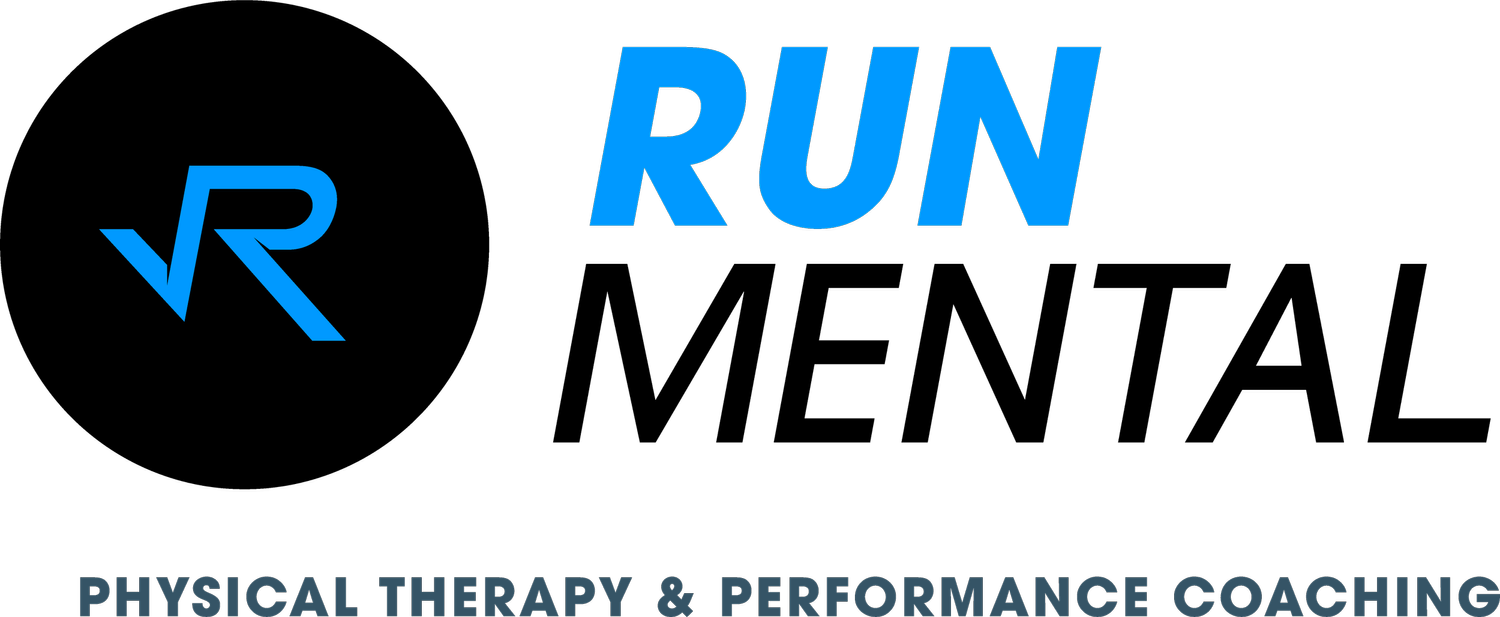The Power of Hydration in Endurance Athletes
“You need to drink water.” Everybody’s heard it. Everyone knows it. And as summer approaches, hydration becomes a hot topic (literally). But just what do we need to do? How does exercise activity change our hydration needs? What should I be supplementing with, if anything? How do hydration recommendations change with gender or body type?
General hydration recommendations (References 1-3)
General hydration recommendations for the sedentary individual range from 68 to 91 fluid ounces per day for adult females and 85 to 125 fluid ounces each day for adult males. That is the equivalent of about six standard bottles of water for males and five for females. Water plays a vital role in thermoregulation, nutrient transport, waste excretion, and organ function. When we compete in endurance sports, the body relies on increased fluid and electrolyte intake to maintain these vital functions.
During exercise, the body has to work harder than baseline in several different ways. The heart must pump faster to supply the working muscles with oxygen, your muscles must work harder to propel your body forward, and the demands on your lungs increase proportionally to increased oxygen need. The greater work rate increases internal body temperature. In response, the body produces sweat to cool the body and prevent pathological overheating. The sweat and electrolyte loss, if not adequately replaced, is where dehydration can present itself.
Dehydration’s Effect on Performance (References 1, 4-7)
As little as 2% dehydration (i.e., 2% loss of body weight) can lead to performance detriments. This loss equates to three pounds for a 150-pound runner. During an average one-hour run without consuming fluid (under average environmental conditions), you can lose up to three pounds, with 90% of that coming from water loss! The 2% loss can affect several different body symptoms. Cognitive impairments, including increased confusion, fatigue, and tiredness, as well as decreased attention, are common results of inadequate hydration. These impairments can affect athletes’ ability to achieve their time or performance goals.
Dehydration can lead to increased body temperature. Lack of water causes the body’s sweat mechanism to be stunted. Sweating is the primary mechanism the body uses to cool itself; when the body loses the ability to sweat, its core temperature increases. Normally, body temperature increases during exercise by about 1 to 2 degrees. When body temperature reaches 103 degrees or higher, heat-related illnesses, such as heat exhaustion or heatstroke, can occur. Additionally, the competing demands of both blood flow to the skin to dissipate heat and blood flow to the working muscles can lead to cardiac insufficiency. When there is not enough blood to go around, the working muscles are starved of necessary nutrients and cannot continue operating efficiently.
Several studies have directly related dehydration to aerobic performance. Carlton et al. found that biking distance was significantly reduced over a 90-minute period of stationary cycling when comparing optimally hydrated to hypohydrated individuals. Robergs et al. found similar results: 12 rugby players performing a 30-minute cycle ergometer test had a higher rating of perceived exertion and higher heart rate throughout the test, with more significant differences the longer the test went on. Additionally, a group of 17 endurance runners completed a 12k run in an optimally hydrated and hypohydrated state. At the conclusion of the study, the hydrated athletes had:
●Faster finishing times.
●Lower core body temperature among finishing.
●Enhanced recovery (heart rate was lower for 20 minutes post run).
●Lower rating of perceived exertion (RPE).
Recommendations for Exercise (References 8-13)
The American Academy of Sports Medicine (AASM) recommends that athletes start with 14 to 27 fluid ounces per hour of fluid intake while exercising and adjust as needed. The higher end of that spectrum is more specific to heavier and faster runners, in addition to increased ambient temperature. Slower or lighter runners in cooler weather may be adequately hydrated with 14 ounces per hour, but they may also be “heavy sweaters” and require an intake on the higher end. To make this equation even more confusing, initial sodium recommendations range from 300 to 600 milligrams per hour but can also vary wildly between individuals.
How do we solve this equation appropriately? Insert a sweat rate and sweat sodium test. A sweat rate test is relatively straightforward. Weigh yourself before a run without clothing and go for a one-hour run without urinating. Drink 16 ounces of water (1 pound) during your run and weigh yourself again without clothing afterward. Then use this formula:
Pre-run weight – (Post-run weight + Fluid consumed in lbs) = Sweat rate
Every pound of weight lost is equivalent to 16 fluid ounces of water. For example, a 160-pound runner who consumes 16 ounces of water during a one-hour run and weighs 158 pounds afterwards would have a sweat rate of 16 ounces per hour. Therefore, a fluid intake of 16oz/hr would generally be recommended for an athlete under similar environmental conditions and effort level.
Along with fluid intake, sodium needs must be addressed. Sodium plays many important roles in the body, but the most relevant role in endurance athletes is in helping to regulate blood plasma volume and absorb fluids more effectively. More blood plasma volume equals more oxygen to working muscles during exercise, reducing the overall strain on the cardiovascular system.
Sweat sodium concentrations can vary from 200 to 2,000 milligrams per 32 ounces of sweat. The AASM recommends starting with 300-600 mg of sodium per hour during activity and adjusting accordingly. On the higher end, there are several signs that “salty” sweaters demonstrate, including salt stains, salty taste of sweat, or frequent muscle cramping after long periods of exercise. Undergoing a sweat sodium test can help to determine your individual sodium loss. Several companies offer sweat sodium tests, and at-home tests are available too. The test is quick and painless, involving the placement of an electrode on your skin to stimulate your sweat glands while you are seated.
When we are training at higher elevations (as in Colorado), both fluid and electrolyte needs increase. Altitude training, in most studies, is defined as training at an altitude of at least 6,500 feet. At these altitudes, there is less humidity in the air and evaporation of sweat occurs more quickly. In addition, the lungs have to work harder to maintain oxygen levels, leading to increased water loss through evaporation via the respiratory system. Staying on top of your hydration needs is of utmost importance when training at altitude.
Final Thoughts
Adequate hydration is a fluctuating target that depends on a variety of environmental and personal factors. The results of sodium and sweat tests give hydration numbers specific to the conditions on the test day and provide a great starting point to help you determine your personal fluid and sodium needs. However, adjusting your intake in proportion to the type and condition of the activity is essential. While no hydration strategy is one-size-fits-all, a tailored, well-practiced plan will prepare you for the demands of any race day.
If you feel that you need help structuring your training program or strength work, please don’t hesitate to reach out to us or another trusted professional. You can reach us at (719) 270–3155 or chase@runmental.com.
References
Liska D, Mah E, Brisbois T, et al. Narrative review of hydration and selected health outcomes in the general population. Nutrients. 2019;11(1):70. doi:https://doi.org/10.3390/nu11010070.
Writer S. The importance of hydration. 2017. https://hsph.harvard.edu/news/the-importance-of-hydration.
Titchenal A. Hydration basics for endurance runners. https://www.hawaii.edu/run/hydrate.htm.
Marriott BM. Physiological responses to exercise in the heat. 2016. https://www.ncbi.nlm.nih.gov/books/NBK236240/.
Carlton A, Orr RM. The effects of fluid loss on physical performance: a critical review. Journal of Sport and Health Science. 2015;4(4):357-363. doi:https://doi.org/10.1016/j.jshs.2014.09.004.
Robergs R, Todd Review Board, Astorino J, et al. Sports physiology effects of hydration status on aerobic performance for a group of male university rugby players. 2005;8. https://www.asep.org/asep/asep/BakerHydrationV3.pdf.
Casa DJ, Stearns RL, Lopez RM, et al. Influence of hydration on physiological function and performance during trail running in the heat. Journal of Athletic Training. 2010;45(2):147-156. doi:https://doi.org/10.4085/1062-6050-45.2.14.
Vitale K, Getzin A. Nutrition and supplement update for the endurance athlete: review and recommendations. Nutrients. 2019;11(6):1289.
American College of Sports Medicine. Exercise and fluid replacement. Medicine & Science in Sports & Exercise. 2007;39(2):377-390. doi:https://doi.org/10.1249/mss.0b013e31802ca597.
Veniamakis E, Kaplanis G, Voulgaris P, Nikolaidis PT. Effects of sodium intake on health and performance in endurance and ultra-endurance sports. International Journal of Environmental Research and Public Health. 2022;19(6):3651. doi:https://doi.org/10.3390/ijerph1906365.
Chapman RF, Karlsen T, Resaland GK, et al. Defining the “dose” of altitude training: how high to live for optimal sea level performance enhancement. Journal of Applied Physiology. 2014;116(6):595-603. doi:https://doi.org/10.1152/japplphysiol.00634.2013.
Sinex JA, Chapman RF. Hypoxic training methods for improving endurance exercise performance. Journal of Sport and Health Science. 2015;4(4):325-332. doi:https://doi.org/10.1016/j.jshs.2015.07.005.
Nutrition recommendations for altitude training. Gatorade Sports Science Institute. https://www.gssiweb.org/sports-science-exchange/article/nutrition-recommendations-for-altitude-training.

